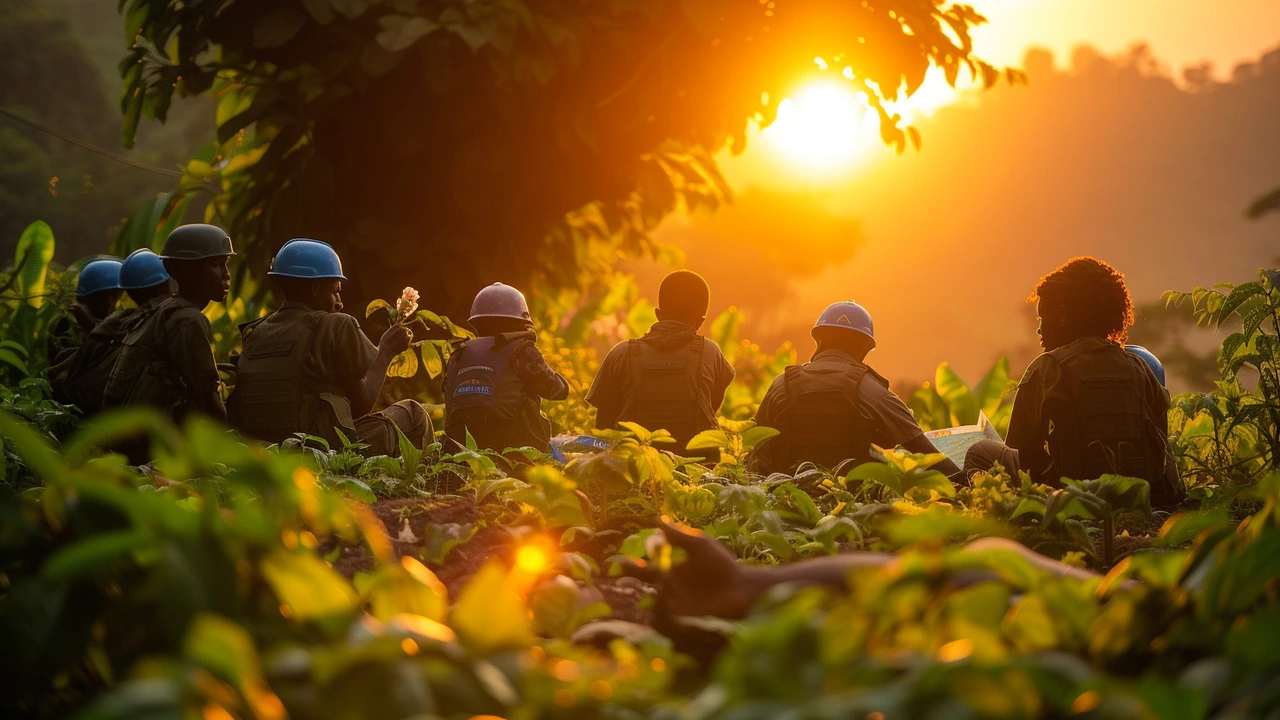More than 90,000 people serve in international peace missions around the world, often putting themselves between armed groups and civilians. These missions are not just soldiers with blue helmets — they are police trainers, election monitors, engineers, doctors, and mediators working to keep fragile peace from collapsing.
A mission starts with a mandate. The UN Security Council, regional bodies, or a coalition agree what the mission should do: monitor a ceasefire, protect civilians, support disarmament, or help hold elections. Countries then contribute troops, police, and experts. Funding comes from UN member states, regional organizations, or donor governments.
On the ground, teams divide tasks. Military units secure areas and patrol. Police trainers help rebuild local forces. Civil affairs teams meet community leaders to solve local disputes. Humanitarian staff coordinate aid and protect vulnerable groups. Technical experts fix water systems, clear mines, and advise on rule-of-law reforms.
Missions work best when mandates are clear, resources match the task, and local leaders cooperate. For example, when peacekeepers support credible elections and build police capacity, communities often see real safety gains. Small projects, like repairing a clinic or running joint patrols with local police, can change daily life fast.
But many missions struggle. Vague mandates leave peacekeepers unsure how far they can act. Limited equipment and slow funding reduce response speed. Access problems or hostility from armed groups make even basic patrols dangerous. Local politics can block reforms, and without strong local institutions, progress can slip away after peacekeepers leave.
Accountability matters. When missions investigate abuses and support local justice, they build trust. When they don’t, resentment grows and the mission’s credibility falls.
Technology is changing the game. Drones, satellite imagery, and mobile reporting help monitor remote areas. Biometric tools improve aid delivery and voter registration. But tech can’t replace trusted local relationships — it only adds a layer of information.
Training and cultural awareness are crucial. Troops who speak local languages, understand customs, and work with community leaders reduce misunderstandings and build cooperation. Gender-awareness training and policies that protect civilians — especially women and children — improve mission impact.
Want to learn more or help? Follow coverage on Peacekeeping News Hub tag pages for mission updates and real stories from the field. Support reputable humanitarian groups that work alongside peace missions, and push your representatives to fund clear, accountable mandates. Small civic actions — signing a petition, sharing verified reporting, or joining a local discussion — can nudge policy in the right direction.
These missions are messy and imperfect, but when planned and run well, international peace missions save lives and give communities a chance to rebuild. That’s worth paying attention to.
Read our tag posts for in-depth articles on missions, human rights, and first-person stories. Start with 'The Quiet Warriors' and 'Evolution of Peacekeeping Operations' to see real examples and lessons. Share insights and join the conversation here today online.

Hey there! In today's post, we'll be exploring the valiant efforts of our global Guardians of Peace - the peacekeepers. We'll delve into the complex world of peacekeeping operations, the intricate methods of conflict resolution, and the importance of international peace missions. More than ever, the world needs its guardians - strong, determined individuals who risk their own safety for the peace of others. So, brace yourself for an enriching journey into their commendable lives and feats.
